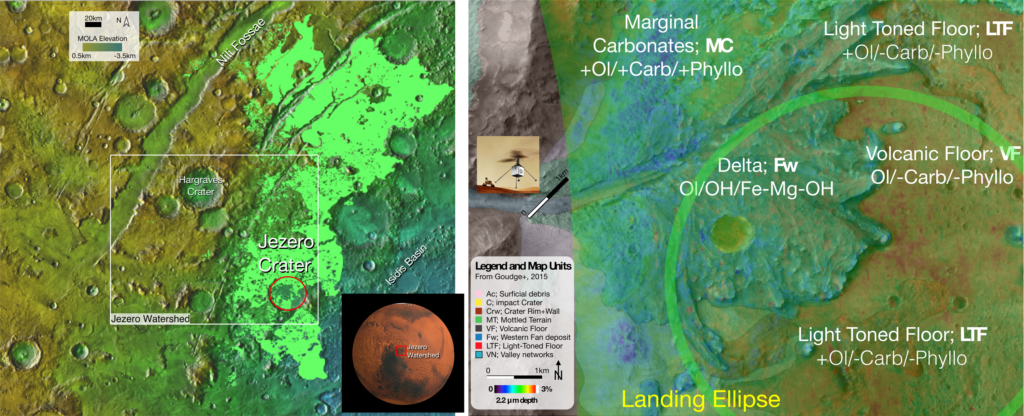
As the Mars 2020 rover Perseverance steadily draws toward its launch date no earlier than July 30, the rover’s internationally distributed science team is working to obtain a more complete understanding of the rocks they can expect to encounter at the landing site in Jezero crater. Over the past two years, the team has selected a landing site, carried out extensive training exercises, and completed a detailed geomorphological mapping project. Scientists on the team are also investigating and critically evaluating evidence for serpentinisation (a chemical reaction that alters olivine to clay and carbonate) of an olivine-rich rock unit that will be available for the rover to investigate upon landing at Jezero.
Recent work by Adrian Brown, Deputy Program Scientist for Mars 2020, and colleagues points to an ancient microbe system preserved in approximately 3.5-billion-year-old rocks in Australia as a place from which we can increase our understanding of the 3.8-billion-year-old olivine-carbonate lithology at Jezero. Similar ages, mineralogy, grain size, friability, textures, alteration, silicification, and biosignature preservation are key aspects potentially shared between the two ancient geological systems.
The first well-established evidence of life is retained in a chert unit close to the clay-carbonate approximately 3.5-billion-year-old rocks at the Pilbara (see e.g. Allwood et al. 2006). If life had evolved on Mars in a similar time frame, then these analogs could help us understand the best places to look for stromatolites (see e.g. Horgan et al. 2020).
Combining this Earth analog research with remote sensing studies of Mars itself has prepared the international Mars 2020 science team for exciting new in-situ studies when the rover lands.
The full EOS paper can be found here.